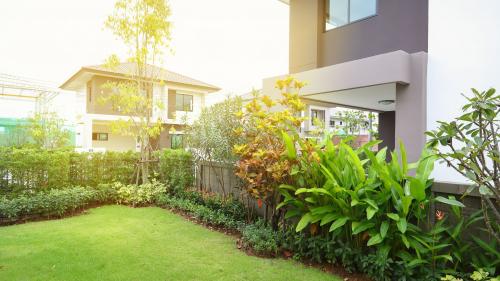How to Design a Pollinator Garden in Guelph: A Step-by-Step Guide

Creating a pollinator garden in Guelph is a rewarding endeavor that not only enhances the beauty of your outdoor space but also plays a crucial role in supporting local biodiversity. Pollinators such as bees, butterflies, and hummingbirds are essential for the pollination of many plants, including those that produce fruits, vegetables, and seeds. By following these step-by-step instructions, you can create a thriving pollinator garden that provides food and habitat for these vital creatures.
Step by Step Guide on How to create Pollinator Garden
1. Plan Your Garden Space
Assess Your Location: Choose a sunny location, as most pollinators are attracted to areas with ample sunlight. Observe your garden to identify the spots that receive at least six hours of direct sunlight each day.
Soil Testing: Conduct a soil test to determine the pH and nutrient levels. Pollinator-friendly plants often thrive in well-drained soil with a pH between 6.0 and 7.0. Amend your soil as needed with compost or organic matter to improve fertility and drainage.
Design Layout: Sketch a layout of your garden, considering the mature size of plants to avoid overcrowding. Group plants in clusters rather than single specimens to create a more attractive and accessible environment for pollinators. For those who prefer professional assistance, consulting with the best landscapers in Guelph Ontario can help you design an optimal layout and select the best plants for your garden.
2. Select Pollinator-Friendly Plants
Native Plants: Opt for native plants as they are well-adapted to the local climate and soil conditions, making them more resilient and beneficial to local pollinators. In Guelph, some excellent choices include:
- Black-eyed Susan (Rudbeckia hirta): Attracts bees and butterflies.
- Purple Coneflower (Echinacea purpurea): A favorite among butterflies and bees.
- Milkweed (Asclepias spp.): Essential for monarch butterflies.
Diverse Planting: Incorporate a variety of plants that bloom at different times throughout the growing season. This ensures a continuous supply of nectar and pollen. Consider the following categories:
- Early Bloomers: Crocus, columbine, and wild geranium.
- Mid-Season Bloomers: Bee balm, butterfly weed, and coreopsis.
- Late Bloomers: Goldenrod, asters, and sedum.
3. Provide Water Sources
Pollinators need water to drink and to maintain the proper humidity in their nests. Create shallow water sources, such as a birdbath with stones for perching or a shallow dish with pebbles. Ensure these water sources are kept clean and filled regularly.
4. Create Shelter and Nesting Sites
Nesting Sites: Incorporate features that provide nesting sites for different pollinators. For example:
- Bee Houses: Install bee houses or blocks with holes of varying sizes to attract solitary bees.
- Leaf Litter and Dead Wood: Leave some areas of your garden with leaf litter or dead wood to offer nesting sites for ground-nesting bees and other insects.
Windbreaks: Plant shrubs or install structures to act as windbreaks, creating a more hospitable environment for pollinators by reducing wind and providing shelter.
5. Avoid Pesticides and Chemicals
Minimize or eliminate the use of pesticides and chemical fertilizers, as they can harm pollinators. Opt for organic gardening practices and use natural pest control methods, such as introducing beneficial insects or using neem oil and insecticidal soap.
6. Maintain Your Garden
Regular Monitoring: Keep an eye on your garden to ensure plants are healthy and thriving. Remove invasive species that could compete with your pollinator-friendly plants.
Deadheading and Pruning: Regularly deadhead spent flowers to encourage more blooms and prolong the flowering season. Prune plants as necessary to maintain their shape and health.
Watering: Water your garden during dry periods, especially in the first year while plants are establishing their root systems. Early morning is the best time to water, reducing evaporation and allowing plants to absorb moisture before the heat of the day.
7. Educate and Engage Your Community
Share your knowledge and enthusiasm for pollinator gardening with your neighbors and local community. Host garden tours, participate in local garden clubs, or offer to speak at community events. Encouraging others to create pollinator gardens will help build a network of habitats, supporting a more robust and resilient pollinator population in Guelph.
8. Certify Your Garden
Consider certifying your pollinator garden with organizations like the Canadian Wildlife Federation or the Xerces Society. Certification can provide you with a sense of accomplishment and offer additional resources and support.
Conclusion
Designing a pollinator garden in Guelph is a meaningful way to contribute to local biodiversity and support essential pollinators. By following these steps, you can create a beautiful, thriving garden that provides food, shelter, and water for bees, butterflies, and other pollinating creatures. Not only will your garden flourish, but you'll also play a vital role in maintaining the ecological health of your community. Happy gardening!
Comments